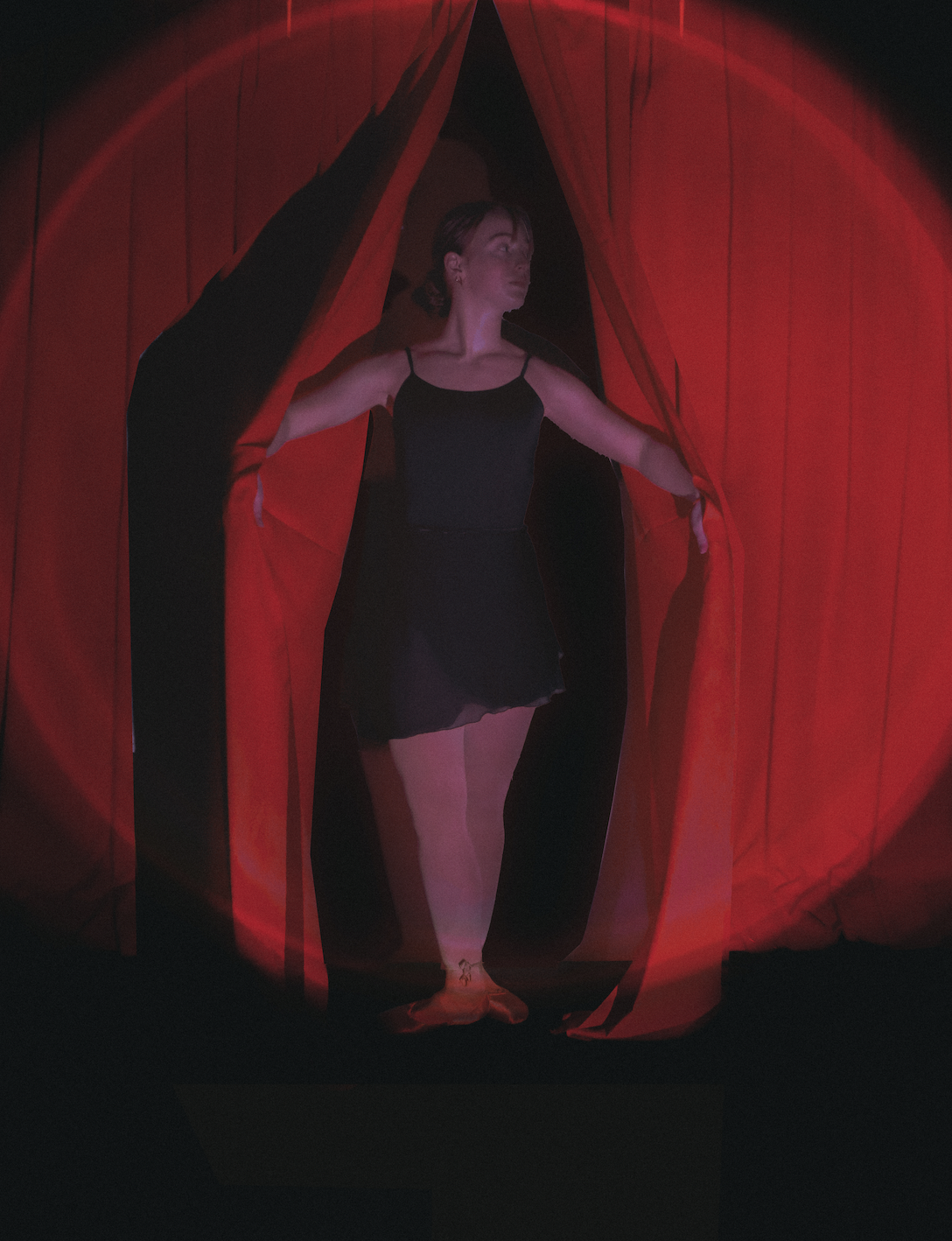The Lost Art of Quiet Theater
The Lost Art of Quiet Theater
Written by Julia Slaughter
Photographed by Celia Labarge
It’s Christmastime in Boston. The sun is shining over a fresh blanket of snow in the Common, colorful string lights illuminate the city, and the Boston Ballet is performing “The Nutcracker” morning, noon, and night. The historic theater is packed with people dressed in formal attire, many accompanied by little girls in ballet costumes (ever hopeful that they might be beckoned onto the stage to perform with the ballerinas), and beautiful artifacts from the ballet are on display—tiaras with real diamonds, sparkling white tutus on mannequins, and the original pointe shoes of ballerinas past.
Everyone anxiously takes their seats as the lights dim. The orchestra comes to life to play the overture. A spotlight warms the stage. But all you see are the blaring white lights dotting the room from various audience members’ phone screens breaking through the darkness. The plucking of violin strings from the pit is overshadowed by candy wrappers crinkling, the shuffling of too-young children uncomfortable in their seats, and the whispered, yet still too loud chatter of two moms in the row behind you, talking about their own daughters’ dance classes and upcoming recital.
Once upon a time, live theater was the primary form of entertainment—before radios and record players and music streaming and television, there were musicals, plays, ballets, and operas. While perhaps only accessible for a wealthier crowd, these events were the norm, and, because of that, the etiquette of being an audience member was an inherent part of the culture—something acquired over time while attending such events. Perhaps because entertainment options were so limited, these live events were even more special.
Nowadays, we are overwhelmed with countless avenues begging for our attention: sure, there’s still live theater, but we also have the option of watching and engaging with nearly any conceivable piece of media with a device kept in our back pockets. We have to be selective with our attention now, as it is one of the few things in life we can control.
As someone who grew up performing in the classical ballet world, I learned firsthand the dos and don’ts of attending live theater from the other side of the curtain. Here are the basics of making the live theater experience enjoyable for yourself, your fellow audience members, and the performers:
Don’t look at your phone at all. Just don’t do it. Put it on Do Not Disturb, or, if you absolutely have to do something, step out into the hallway.
Any comments should be whispered, and very brief. Save the major life updates or your review of the show for dinner afterwards.
Enjoy your snacks, but don’t make any unnecessary noise with packaging.
Don’t bring kids under seven unless it is specifically a show for kids. Kids learn by example: if you’re chatty and distracted during the show, then they likely will be too.
All this being said, don’t be afraid to make a ton of noise when applauding a great performance. The people on stage get their high from the energy of the crowd, so at the end of a section or the end of a show, get rowdy if you enjoyed it.
It’s really that simple. However, a lot of this does not apply to the more popular forms of live entertainment today, such as concerts or sporting events—those events are far more casual and social, and the goal is often to be rowdy the whole time. This does not translate to theater, where the goal is to take in the art and respond with a more quiet, respectful, very present energy.
Perhaps this sounds like the irritatingly strict rules of an elementary school assembly; however, it is purely logistical. You can still hear and follow along with a concert or sports game with people talking and singing around you, and the audience plays a much larger role in the experience of those events. When watching any kind of live theater, the storyline, the subtleties in the music, and the transportation into the world of the show is integral to its success. How are you supposed to feel like you’re in the Land of the Sweets with Clara when the person next to you is playing Candy Crush with their brightness turned all the way up?
Theater may not have the same mainstream popularity it once did, but the industry is still very much alive and well. In many ways, the theater world—particularly in the ballet sphere—needs to make changes in order to stay relevant in the modern era; however, there are ways in which the audiences need to make adjustments to the disposition of an earlier day and age to make the experience enjoyable (and worth the time and money invested) for everyone involved.

